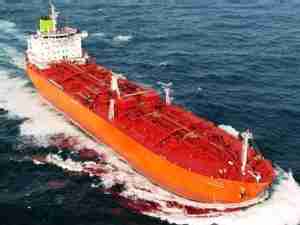China mulls easing curbs to allow larger vessels, Vale may benefit
By: Reuters | Aug 29 2013 at 12:08 PM | Maritime
Chinese shipowners have strongly opposed access for Vale's mega ships amid concerns they could worsen a shipping glut and steal market share, but their use would cut shipping costs of the raw material for China's steel mills.
For Vale, approval for its Valemax vessels to enter Chinese ports would help the miner cut transport costs by up to a third and allow it to better compete with Australian rivals Rio Tinto and BHP Billiton , whose mines are closer to China.
China's Ministry of Transport barred the mega ships from the country's ports in early 2012, citing safety concerns after the first 400,000 deadweight tonne (dwt) Valemax docked at Dalian Port in December, 2011.
It said vessels for oil and dry bulk commodities would not be allowed to exceed a port's nominal capacity, implying that big ports rated at about 250,000-300,000 tonnes for iron ore cargo are not allowed to take Valemaxes.
However, Chinese ports have been upgrading their infrastructure in recent years to tap into strong demand for dry bulk commodities and oil, putting their true capacity above their approved capacity.
In a draft document published on its website on Aug. 23, the transport ministry said ports may be allowed to receive ships based on the inherent capacity of their infrastructure, pending regulatory approvals.
A ministry official said the proposal was still subject to change. The draft document sought feedback from local marine authorities, ports and shipowners by Sept. 6.
Shipowners Key
Officials with China's Shipowners Association (CSA) and China Ports and Harbours Association contacted by Reuters said they were still seeking opinions from their members including shipowners and ports.
Chinese shipowners have also been building larger, more fuel-efficient vessels to feed robust demand from the world's top consumer of many commodities from grains to iron ore, although not as large as the Valemax vessels.
"The main objective is to allow ports to accept larger ships without endangering either berths or ships, but it looks like the government is loosening control, which is good news for Vale," said a shipping source in Shanghai.
CSA has previously lobbied the government to prevent Valemaxes entering China in an effort to shield its loss-making shipping industry as a glut in vessels globally dragged down shipping rates and forced hundreds of shipyards out of business.
CSA secretary-general Zhang Shouguo said the draft document did not necessarily mean Valemax ships would be approved to enter Chinese ports.
"It is a major trend in the world that ships are larger, more fuel-efficient and specialized," Zhang told Reuters.
A Vale official told Reuters last year that the issue had been raised for government-to-government negotiations.
Most of the Valemax vessels were built in China with Chinese government finance. One vessel did manage to dock at China's Lianyungang port in April this year.
Vale expects to have a fleet of 35 of the ships sailing by the end of this year, of which 19 will be owned directly by Vale. The rest will be owned by third-parties and operated under fixed cargo contracts with Vale.
Besides Dalian and Lianyungang, other ports that may be able to accept Valemax vessels include Dongjiakou port and Caofeidian port, as well as Zhanjiang port and Ningbo Zhoushan port, which are under construction, industry sources said. (Reuters)










